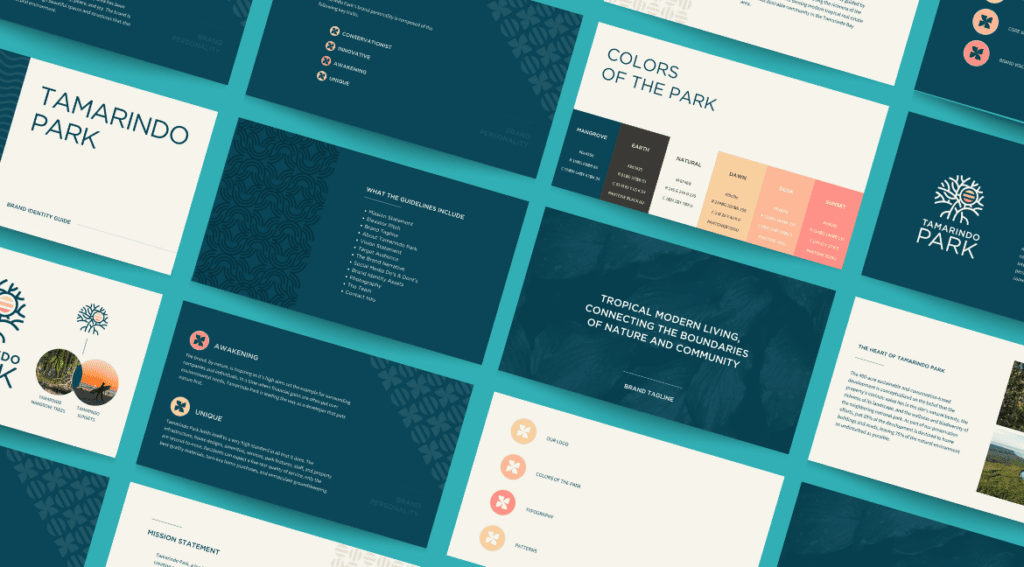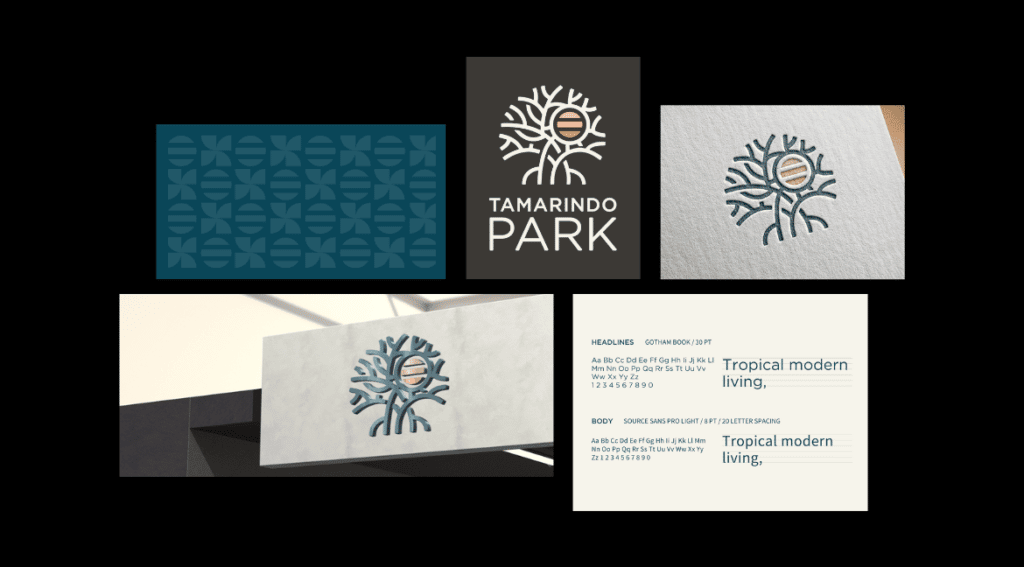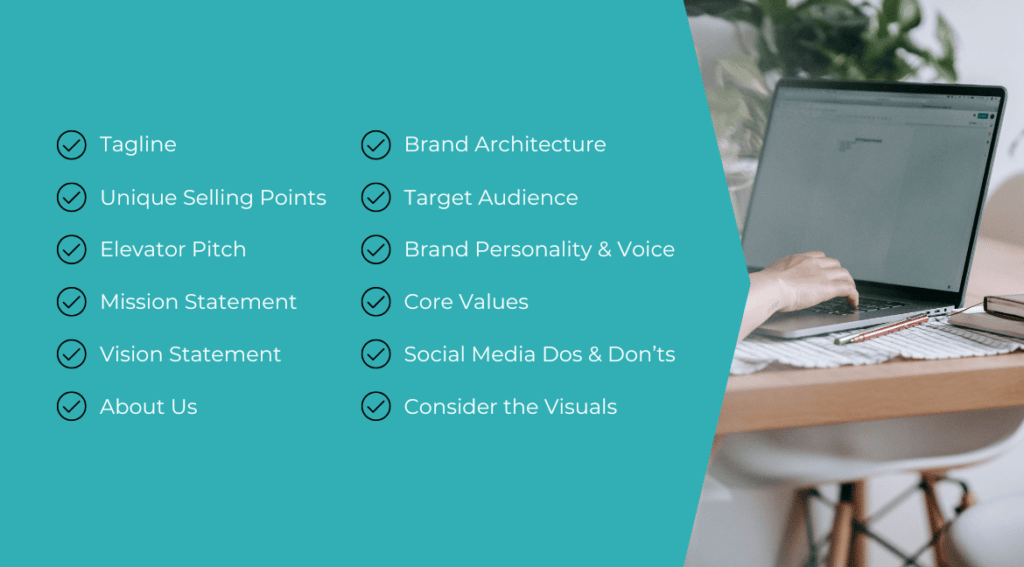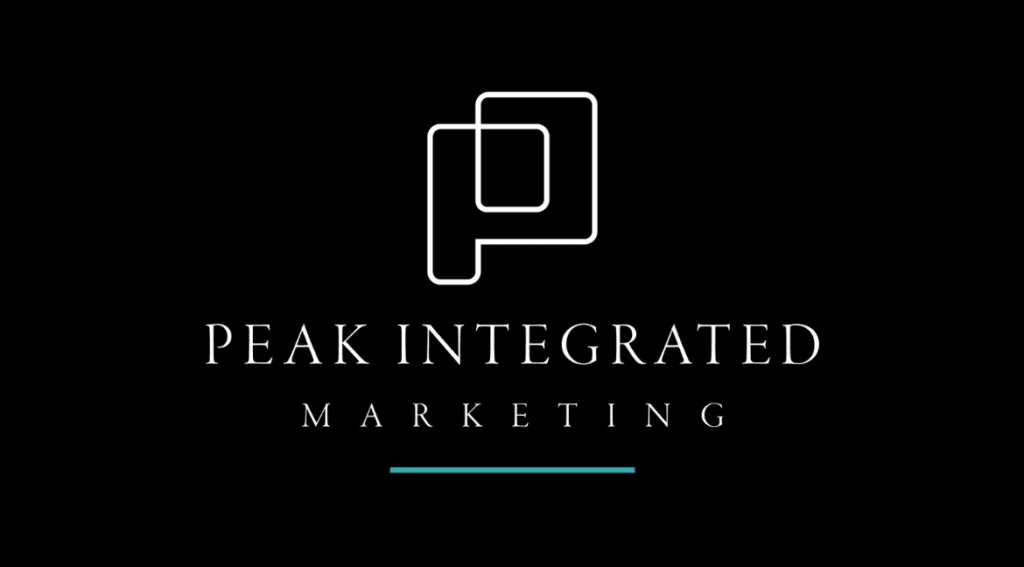
Fair warning: This isn’t a low-stakes post. Because this – that is, how to create a brand book and then, how to use it effectively – is the most integral, comprehensive, daily-use aspect of your branding.
Think of it as your brand bible: a document you circle back to, every time you need a refresher on your brand identity, brand narrative, brand guidelines, and brand visuals. It’s your reference point, every time you want to circle back to your core message, values, mission, and unique offerings. Your visual guideline for every new ad, page, social media post, photo shoot, and visual you design.
This is where you put everything that matters about your brand: More than a snazzy logo or unforgettable tagline, this is about your mission and vision, your brand voice and personality, your social media behavior and your target audience. In other words, the individual elements of the greater whole.
And this “whole” is critical. It’s the foundation of everything you’ll do, really – a cohesive, put-it-all-here, get-everyone-on-the-same-page document that you’ll reference, again and again and again. That’s why you want to have your brand book guidelines down pat, before you start.
You know – no pressure or anything! Let’s get started.
How to Create a Brand Book: Start with Brand Identity (And Why Does it Matter?)

Brand identity is how your business presents itself. And if you’re having trouble personifying something as inanimate as a brand, then think of it as brand awareness: it’s the face of your company and it shapes how the public sees and relates to your brand and services.
A strong brand identity also sets you apart from your competition.
If you like bullet lists, then brand identity can be distilled down into:
- Who you and your company are, at your cores
- What you say
- Why you do what you do (in other words, your company values)
- Where your values lie
- How you communicate your services and USPs
- How you want people to feel, when they work with your company
- What you promise to your clients
This identity is also the critical linchpin in your brand strategy. It’s the foundation for building your brand narrative, your storytelling, your brand personality, and your marketing. It has the ability to stoke emotion and turn the general public into clients – and then, clients into loyal repeat clients who spread the word.
In other words, when approaching how to create a brand book, your brand identity is where your success begins. So, yeah, it matters. And that’s what makes this such a high-stakes task.
Your Brand Identity ≠ Your Brand Book
Brand identity can be a monumental undertaking: It takes a lot of brainstorming, discussion, and perfection. By comparison, the steps on how to create a brand book are easy.
That’s because your brand book will solidify your brand identity into words. It will create centralized documentation that pulls everything together, to help you keep what matters at the forefront of your mind.
It also streamlines future onboarding for new team members: Simply point them in the direction (link) of your brand book, and they’ll know all the most salient, most important information to represent and discuss your business online.
How to Create a Brand Book: The 12 Essential Elements

The key elements begin with 12 can’t-be-missed brand book guidelines, which encompass both your brand narrative and visual identity, are surprisingly (and, perhaps, deceivingly) simple.
The hard work comes when you work through each. Remember, this is the foundation upon which you’ll build your brand, for years into the future. Make it strong.
1. Tagline
This is the short, often catchy phrase that captures your brand’s essence.
2. Unique Selling Points
Unique selling points are, in essence, your competitive advantage: those few specifics that really spell out your winning difference.
Your USPs are the absolute foundation of your marketing: they will inform and shape all your marketing efforts. They’re incredibly important because you’ll reference them, again and again. List them out in bullet-point format.
3. Elevator Pitch
It doesn’t lead but, in terms of how to create a brand book, this is one of the most important elements: Pretend you have 30 seconds to introduce your company to someone who’s never heard of it before. Or convince someone of what your company can do for them.
This is your elevator pitch. Keep it short!
4. Mission Statement
Think long and hard about your company’s mission. What makes your brand important? What is your driving force? What do you work to accomplish, every day?
There are usually four main elements to your mission:
- Value: What value do you uniquely (in some aspect) provide to your clients AND your employees/contractors?
- Inspiration: Why do clients want to work with you? Why do employees/contractors want to work for you?
- Credibility: Make your mission not only reasonable, but also one you can back up with real-world evidence or examples.
- Specificity: Be specific with your mission and tie each element back to your business and brand. Almost everyone “wants to make the world a better place” but your mission should state how you do that.
And with all that said, state your mission in just a couple of short paragraphs. (We’re talking about six sentences or less.) Keep it concise.
5. Vision Statement
While your mission states where you are, your vision statement pushes you toward where you hope to be – whether it’s three months or five years down the line.
Think of it as the anchor to your strategic plan. Then, tell the world about your plan. Don’t be afraid to dream big. (Your vision statement is often for internal use only; you only share the elements you’d like to.)
6. About Us
The best About pages are approachable, authentic, and full of personality. And this is also one of the most enjoyable steps in how to create a brand book.
Since you’re already sectioning out your Mission, Vision, and Elevator Pitch, make your brand book’s About section all about your origin story and general why. Make sure to infuse plenty of personality – key word, personal! If you’re comfortable with telling your story, do it.
7. Brand Architecture
Think of this as your brand hierarchy: How do you structure your parent brand in relation to its child brands?
Brand architecture is not just the foundation of your company but the building blocks of everything that follows – a reflection of your business positioning, strategy, and objectives, as you present them both internally and to the public.
So again, no pressure!
8. Target Audience
We know it sounds like a chicken-and-egg scenario – do you start with who you are or who your clients are? – but from a brand identity and marketing standpoint, as well as brand book guidelines, you should always start with your clients.
Here’s why: Your company can maintain its values while adjusting to client needs and expectations, but your clients will not adjust their needs and expectations to your messaging.
So, start by getting to know their clients. Beyond their demographics, think about their pain and pleasure points – in other words, what are their biggest worries and what would make them deliriously happy? – and the questions you’re most often asked. Consider their values and what they care about.
Once you have a good picture, create a few client avatars: faux “people” who represent various client types, who you can call to mind as you craft a new ad or write a new social media post. Once you know your clients, you’ll know how to create an emotional connection with them.
9. Define Your Brand Personality & Voice
Just like real people, authentic brands have unmistakable personalities and voices. What’s yours?
As you approach how to create a brand book, it’s critical to come up with rules and guidelines – dos and don’ts that you’ll live by, whether it’s on social media or in your print brochures. Create that tagline. Decide whether or not you’ll use profanity or the five-syllable Word of the Day.
And consider your personality: Are you a bright-colors-and-sandals kind of a company or more buttoned-up for an elite clientele? Write it all out. All of it.
10. Document Your Core Values
Think of your values as the absolute core elements of your brand identity. You’ll probably have anywhere in the range of about 5 to 10 core values.
Write them down and add a sentence or two of explanation to each. Make sure they’re comprehensive and convey what’s most important to your company and the people who work there.
11. Social Media Dos & Don’ts
This is one of those brand book guidelines that functions as an extension of brand voice, with specifics on how you’ll interact on social media. Don’t be afraid to be ultra-specific, for example in whether you’re comfortable using slang, whether you interact bilingually, and more.
If you use branded hashtags, you’ll include them here. You’ll also document your social bios, auto-responses, and other details.
12. Consider the Visuals
At this point, you’ve reached the end of the voice and narrative elements for how to create a brand book. Your documentation is really starting to come together. You have a solid idea of your brand identity and narrative, including what you represent and how you’ll communicate that to the public.
Now’s the time to work on your visuals, right?
Not quite. Work on your visuals should have already started – when you work with Peak, it’s one of the first elements we begin developing! – with your Pinterest brand identity board. This is where you source your inspiration for color palettes, typeface (font), and your logo, if it’s getting a refresh, rebrand, or reboot from scratch.
Your brand guidelines are clearly defined rules and standards that communicate how your brand should be represented to the world. They’ll help your business ensure consistency and demonstrate what your brand is, what you do, and what you stand for.
- Brand Color Palette: Your color palette is a set of pre-selected colors that are used in harmony to convey an idea, feeling, and sensation. They have the power to convey personality and, therefore, correctly defining your palette will add value to your design and express your brand’s personality.
- Brand Typeface: You may not realize it, but we’re conditioned to ascribe certain traits to certain fonts (think serif vs. san-serif, Comic Sans vs. Open Sans). Choosing the right typeface and/or font family will add a visual element to your voice and narrative, while complementing your personality.
- Brand Logo: We all know a brand’s logo is important. Often, it’s the first thing people see – at the top-left of your website, your social media profiles, your everything. If your brand logo does not match the style, color palette, typeface, and other visual elements of your brand, it’s time to update.
Luckily, you’re not in this alone. When you work with a branding agency like Peak, we’ll help you do your visual research and develop your brand narrative (your other brand book elements, above), to ensure that your brand guidelines and visuals complement and accurately reflect every other aspect of your brand.
How to Create a Brand Book: Where and How It’s Used

After all this monumental work, you’re probably wondering: Why did you invest so much time in creating your brand book?
Answer: Because it’s going to be incredibly useful.
Our clients often develop two versions of their brand book: An internal brand book and a client-facing (public) brand book.
One to use internally, when onboarding new team members or to refresh messaging; and a second that has text that can be used in client-facing materials.
Your brand book documents your brand identity in one cohesive file, which you can reference and re-reference whenever needed. Because – and this is the key – you don’t want to deviate from your identity. This is how your public, your clients, and even your own team will get to know you. Flipping the script is confusing at best, alienating at worst.
As they say, stay on brand!
Internal-Use Brand Book

We’ve been discussing how to create a brand book but here’s one of your biggest whys: The final product will be one of the most important tools you use with your team, your employees, and anyone else you need to onboard. (And you can absolutely “onboard” current employees, to be sure they’re up-to-date on your brand personality, messaging, visuals, and other key aspects of your company.)
One of the greatest benefits of your internal brand book is that it’s internal. Here, you can discuss company details that you don’t share with the public. You can let loose with your vision for the future. You can lay out the dos and don’ts of your graphic design. You can share specific guidelines and requests for your team members. You can be honest about what you’re working on and what you do better than the competition – without worrying about scrubbing it for public consumption.
Client-Facing Brand Book

Sometimes, clients choose to create a second brand book that’s appropriate for sharing with the public.
And by that, we don’t mean that you’ll publish your book for the public. Rather, you can create a book that can serve as public shorthand: USPs that you can copy/paste onto your homepage; a vision statement that doesn’t spill secrets but does share professional hopes; brand values that you can share on your socials and websites; and more.
In other words, a client-facing brand book eliminates all the internal, just-us, we’re-not-ready-to-share-this elements and provides you with incredibly powerful, convincing messaging that you can share.
Developing Branded Content

Bottom line – and here’s the crux of it – your brand book will function as your company’s bible for all content moving forward. This is a big part of the why and how to create a brand book.
The content, direction, and messages you craft in and for your brand book will be used everywhere your brand is present – from top-level pages on your website and all your social media posts, to your company culture guidelines and marketing campaigns.
Your USPs (at least one of them) should inform every new marketing campaign, webpage, social media post, video, and ad. Your Mission should shout itself from the proverbial rooftops. And your Elevator Pitch should be front and center, on your website, in your emails, and for almost everything you do.
In other words, your brand book is the literal foundation upon which your brand is built, communicated, and designed. You will employ, deploy, and use its contents every day, even if you don’t physically reference it every day. Eventually, it’ll become second nature; until then, you’ll have a PDF copy at the ready!
How to Create a Brand Book Without Getting Frustrated
If it’s time to document your brand identity, brand guidelines, and brand narrative but you don’t have two of the trio of resources – time, effort, and investment – mentioned above, then you’re not alone. Branding is the foundation of your business; feeling overwhelmed by it means you understand its importance.
If this isn’t your passion or your wheelhouse – if you struggle with the hows and the whats – then you don’t have to go it alone. Because, ultimately, you should love what you do and stick to doing what you love. Farm the rest of it out.
At Peak Integrated Marketing, we take our clients’ branding seriously. In fact, our team includes dedicated branding experts, from consultants and copywriters to SEO professionals and designers, who are dedicated to all of the above.
Not just so you don’t have to, but so that your company benefits from the dedicated expertise, the search engine love, and brand identify-reaffirming branding you truly deserve. So please, get in touch and let’s talk. We look forward to it!

